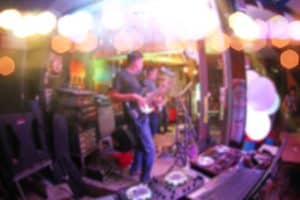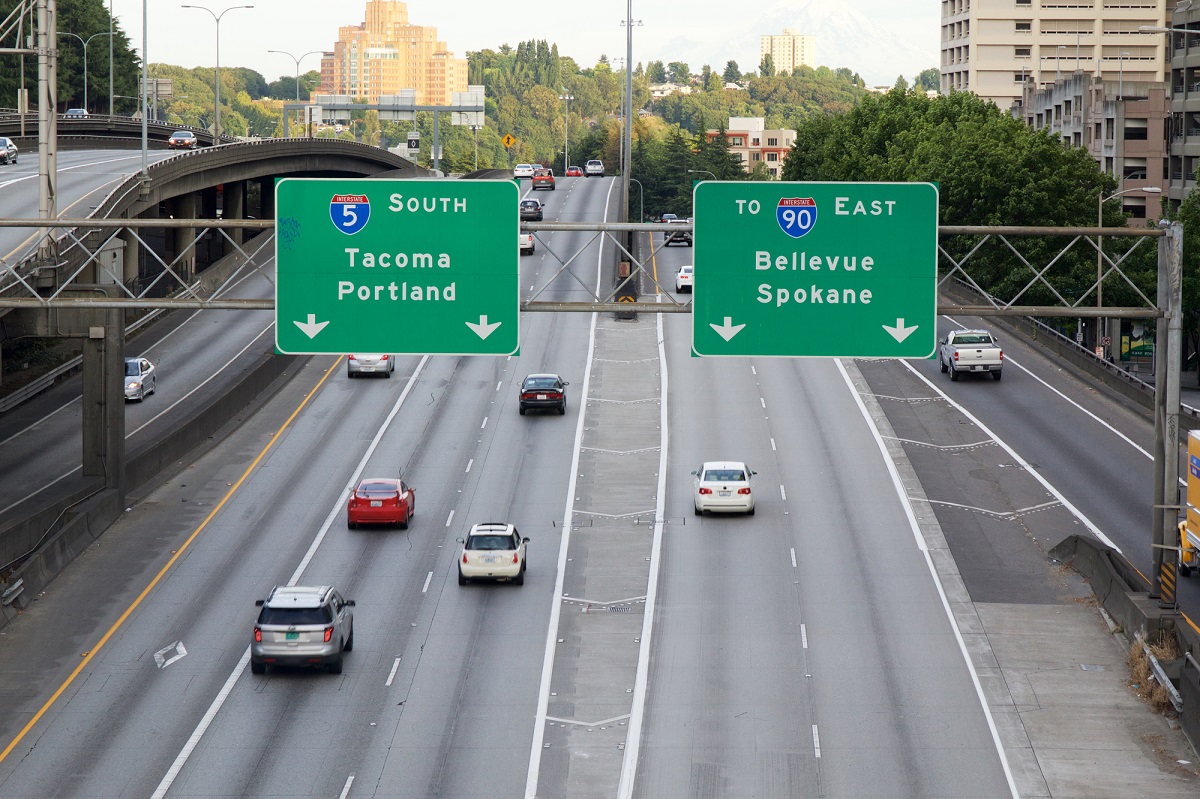Stargazing is simply observing the night sky. It’s an enjoyable hobby enjoyed by many outdoor enthusiasts and amateur astronomers. It’s an activity that can be done any time of the year, alone, with friends, or at a group “star party”. You can also pursue an interest in astronomy from your backyard or neighborhood park. We provide a list of important celestial events each month.
You can also join a public “star party”. This is a fun way to learn and see things for the first time or for the thousandth time. At a star party, you not only share great views of the sky, you have the opportunity to make new friends and learn more about astronomy.
Below we list some information about star parties throughout the Puget Sound region. Most are outdoors, but some have contingency plans for an indoor presentation. You know, just in case it’s cloudy or raining…. We also provide information about attending star parties, what to bring, plus some do’s and don’ts.
Selected Celestial Event Highlights for 2025
Meteor Shower Viewing Tips
To view meteor showers, find an area well away from city lights and streetlights and an area with as large a view of the sky as possible. Dress for the weather! Lie flat on your back (on a lounge chair or blanket is recommended) with your feet facing south. Look up, taking in as much of the sky as possible. After about 30 minutes in the dark, your eyes will adapt, and you will begin to see meteors—be patient. The show should last until dawn, so you have plenty of opportunity to catch a glimpse, even when conditions are not ideal.
While the meteor showers are often named for a specific constellation, it is not the source of the meteors. They are visible throughout the night sky.
All month – Four planets Visible (plus 2 more with a scope): In the first couple of hours after dark, you’ll find Venus and Saturn in the southwest, Jupiter high overhead, and Mars in the east. (Uranus and Neptune are there too, but a telescope is needed to see them.) Planets always appear along a line in the sky, so the “alignment” isn’t special. (That line is called the ecliptic, and it represents the plane of the solar system in which the planets orbit around the Sun.) What’s less common is seeing four or five bright planets at once, which doesn’t happen every year. So, it’s worth checking it out.
January 3, 4 – Quadrantids Meteor Shower. The Quadrantids is an above average shower, with up to 40 meteors per hour at its peak. It peaks this year on the night of the 3rd and morning of the 4th. Best viewing will be from a dark location after midnight. Meteors will radiate from the constellation Bootes, but can appear anywhere in the sky.
January 13 – Full Moon (“Wolf Moon”). The Moon will be located on the opposite side of the Earth from the Sun and its face will be fully illuminated. This phase occurs at 22:28 UTC. This full moon was known by early Native American tribes as the Wolf Moon because this was the time of year when hungry wolf packs howled outside their camps. This moon has also been know as the Old Moon and the Moon After Yule.
January 16 – Mars at Opposition. The red planet will be at its closest approach to Earth It will be brighter than any other time of the year and will be visible all night long.
February 12 – Full Moon (“Snow Moon”). The Moon will be located on the opposite side of the Earth from the Sun and its face will be fully illuminated. This phase occurs at 13:55 UTC. This full moon was known by early Native American tribes as the Snow Moon because the heaviest snows usually fell during this time of the year. Since hunting is difficult, this moon has also been known by some tribes as the Hunger Moon, since the harsh weather made hunting difficult.
March 14 – Full Moon (“Worm Moon”). The Moon will be located on the opposite side of the Earth from the Sun and its face will be fully illuminated. This phase occurs at 06:56 UTC. This full moon was known by early Native American tribes as the Worm Moon because this was the time of year when the ground would begin to soften and the earthworms would reappear. This moon has also been known as the Crow Moon, the Crust Moon, the Sap Moon, and the Lenten Moon.
March 14 – Total Lunar Eclipse. A total lunar eclipse occurs when the Moon passes completely through the Earth’s dark shadow, or umbra. During this type of eclipse, the Moon will gradually get darker and then take on a rusty or blood red color. The eclipse will be visible throughout all of North America, Mexico, Central America, and South America.
April 13 – Full Moon (“Fish Moon”). The Moon will be located on the opposite side of the Earth from the Sun and its face will be fully illuminated. This phase occurs at 00:24 UTC. This full moon was known by early Native American tribes as the Pink Moon because it marked the appearance of the moss pink, or wild ground phlox, which is one of the first spring flowers. This moon has also been known as the Sprouting Grass Moon, the Growing Moon, and the Egg Moon. Many coastal tribes called it the Fish Moon because this was the time that the shad swam upstream to spawn.
April 22, 23 – Lyrids Meteor Shower. The Lyrids is an average shower, usually producing about 20 meteors per hour at its peak. The shower runs annually from April 16-25. It peaks this year on the night of the night of the 22nd and morning of the 23rd. These meteors can sometimes produce bright dust trails that last for several seconds. Best viewing will be from a dark location after midnight. Meteors will radiate from the constellation Lyra, but can appear anywhere in the sky.
May 6, 7 – Eta Aquarids Meteor Shower. The Eta Aquarids is an above average shower, capable of producing up to 60 meteors per hour at its peak in the Southern Hemisphere. In the Northern Hemisphere, the rate can reach about 30 meteors per hour. IThe shower runs annually from April 19 to May 28. It peaks this year on the night of May 6 and the morning of the May 7. The moon will block out some of the fainter meteors this year. But if you are patient, you should be able to catch a some of the brighter ones. Best viewing will be from a dark location after midnight. Meteors will radiate from the constellation Aquarius, but can appear anywhere in the sky.
May 12 – Full Moon (“Flower Moon”). The Moon will be located on the opposite side of the Earth from the Sun and its face will be fully illuminated. This phase occurs at 16:57 UTC. This full moon was known by early Native American tribes as the Flower Moon because this was the time of year when spring flowers appeared in abundance. This moon has also been known as the Corn Planting Moon and the Milk Moon.
June 11 – Full Moon (“Strawberry Moon). The Moon will be located on the opposite side of the Earth from the Sun and its face will be fully illuminated. This phase occurs at 07:45 UTC. This full moon was known by early Native American tribes as the Strawberry Moon because it signaled the time of year to gather ripening fruit. It also coincides with the peak of the strawberry harvesting season. This moon has also been known as the Rose Moon and the Honey Moon.
July 10 – Full Moon (“Buck Moon”). The Moon will be located on the opposite side of the Earth from the Sun and its face will be fully illuminated. This phase occurs at 20:38 UTC. This full moon was known by early Native American tribes as the Buck Moon because the male buck deer would begin to grow their new antlers at this time of year. This moon has also been known as the Thunder Moon and the Hay Moon.
July 28, 29 – Delta Aquarids Meteor Shower. The Delta Aquarids is an average shower that can produce up to 20 meteors per hour at its peak. The shower runs annually from July 12 to August 23. It peaks this year on the night of July 28 and morning of July 29. Best viewing will be from a dark location after midnight. Meteors will radiate from the constellation Aquarius, but can appear anywhere in the sky.
August 9 – Full Moon (“Sturge ion Moon”). The Moon will be located on the opposite side of the Earth as the Sun and its face will be will be fully illuminated. This phase occurs at 07:56 UTC. This full moon was known by early Native American tribes as the Sturgeon Moon because the large sturgeon fish of the Great Lakes and other major lakes were more easily caught at this time of year. This moon has also been known as the Green Corn Moon and the Grain Moon.
August 12, 13 – Perseids Meteor Shower. The Perseids is one of the best meteor showers to observe, producing up to 60 meteors per hour at its peak. The shower runs annually from July 17 to August 24. It peaks this year on the night of August 12 and the morning of August 13. The waning gibbous moon will block out all but the brightest meteors this year. But if you are patient, you may still be able to catch quite a few good ones. Best viewing will be from a dark location after midnight. Meteors will radiate from the constellation Perseus, but can appear anywhere in the sky.
September 7 – Full Moon (“Harvest Moon”). The Moon will be located on the opposite side of the Earth from the Sun and its face will be fully illuminated. This phase occurs at 18:10 UTC. This full moon was known by early Native American tribes as the Corn Moon because the corn is harvested around this time of year. This moon is also known as the Harvest Moon. The Harvest Moon is the full moon that occurs closest to the September equinox each year.
September 21 – Saturn at Opposition. The ringed planet will be at its closest approach to Earth and its face will be fully illuminated by the Sun. It will be brighter than any other time of the year and will be visible all night long. This is the best time to view and photograph Saturn and its moons. A medium-sized or larger telescope will allow you to see Saturn’s rings and a few of its brightest moons.
October 7 – Full Moon, Supermoon (“Hunters Moon”). This is the first of three supermoons for 2025. The Moon will be near its closest approach to the Earth and may look slightly larger and brighter than usual. This phase occurs at 03:49 UTC. This full moon was known by early Native American tribes as the Hunters Moon because at this time of year the leaves are falling, and the game is fat and ready to hunt. This moon has also been known as the Travel Moon and the Blood Moon.
October 21, 22 – Orionids Meteor Shower. The Orionids is an average shower producing up to 20 meteors per hour at its peak. The shower runs annually from October 2 to November 7. It peaks this year on the night of October 21 and the morning of October 22. This is an excellent year for the Orionids. The moon will be absent all night long, leaving dark skies for what should be an excellent show. Best viewing will be from a dark location after midnight. Meteors will radiate from the constellation Orion, but can appear anywhere in the sky.
November 5 – Full Moon, Supermoon (“Beaver Moon”). This is the second of three supermoons for 2025. The Moon will be near its closest approach to the Earth and may look slightly larger and brighter than usual. This phase occurs at 13:21 UTC. This full moon was known by early Native American tribes as the Beaver Moon because this was the time of year to set the beaver traps before the swamps and rivers froze. It has also been known as the Frosty Moon and the Dark Moon.
November 17, 18 – Leonids Meteor Shower. The Leonids is an average shower, producing up to 15 meteors per hour at its peak. This shower is unique in that it has a cyclonic peak about every 33 years where hundreds of meteors per hour can be seen. That last of these occurred in 2001. The shower runs annually from November 6-30. It peaks this year on the night of the 17th and morning of the 18th. This should be an excellent year for the Leonids. Best viewing will be from a dark location after midnight. Meteors will radiate from the constellation Leo, but can appear anywhere in the sky.
December 4 – Full Moon, Supermoon (“Cold Moon”). This last of three supermoons for 2025. The Moon will be near its closest approach to the Earth and may look slightly larger and brighter than usual. This phase occurs at 23:15 UTC. This full moon was known by early Native American tribes as the Cold Moon because this is the time of year when the cold winter air settles in and the nights become long and dark. This moon has also been known as the Long Nights Moon and the Moon Before Yule.
December 13, 14 – Geminids Meteor Shower. The Geminids is the king of the meteor showers. It is considered by many to be the best shower in the heavens, producing up to 120 multicolored meteors per hour at its peak. The shower runs annually from December 7-17. It peaks this year on the night of the 13th and morning of the 14th. Best viewing will be from a dark location after midnight. Meteors will radiate from the constellation Gemini, but can appear anywhere in the sky.
December 21, 22 – Ursids Meteor Shower. The Ursids is a minor meteor shower producing about 5-10 meteors per hour. The shower runs annually from December 17-25. It peaks this year on the the night of the 21st and morning of the 22nd. Best viewing will be just after midnight from a dark location far away from city lights. Meteors will radiate from the constellation Ursa Minor, but can appear anywhere in the sky.
For more information on these events, visit the Astronomy Calendar of Celestial Events (seasky.org), Moon Phases – Lunar Calendar (timeanddate.com), EarthSky Tonight (earthsky.org), and Skywatching tips from NASA (olarsystem.nasa.gov).
Free stargazing events in Seattle-Tacoma
The following groups and organizations regularly hold free public stargazing events throughout the region.
Stargazing with Seattle Astronomical Society in public parks around King County
Seattle Astronomical Society (SAS) organizes monthly star parties in area parks. These outdoor stargazing events are free, family-friendly, and open to the public. A typical star party gathering features observing through two or more different types of telescopes provided by SAS members, along with the opportunity to ask questions, discuss the observation process, and learn about astronomical topics. Weather cancels the event; last minute updates are available on their website: http://www.seattleastro.org/news_and_events/star_parties
To enhance your experience, you may want to download and print your own copy of the current Evening Sky Map at http://www.skymaps.com/downloads.html. This 2-page guide contains a detailed sky map, the current monthly sky calendar, and a descriptive list of the best objects to see with binoculars, a telescope, or using just your eyes. It is suitable for all stargazers including newcomers to astronomy. And, unlike other star charts on the Web, The Evening Sky Map will print clearly on any printer.
Stargazing at UW Seattle Theodor Jacobsen Observatory
A dedicated group of SAS volunteers offer twice-monthly programs April through October at the Theodor Jacobsen Observatory (TJO) on the University of Washington Seattle campus. The program includes a short presentation by SAS members and/or UW undergrads, history of the observatory and its beautiful telescope (over 100 years old), and if the weather permits, the dome is opened for views through the telescope. Check their calendar for upcoming events: http://depts.washington.edu/astron/outreach/jacobsen-observatory/#a2
Stargazing in Tacoma
Tacoma Astronomical Society (TAS) hosts free public viewing sessions each month at Pierce College near Fort Steilacoom in Lakewood (about 10 miles south of Tacoma). There is no charge for stargazing and observing the night sky through TAS telescopes. However, donations are gladly accepted. The donations are used to further public education and outreach programs. On cloudy nights, indoor lectures, demonstrations, and workshops will be available at public events regardless of the weather. Check their schedule: : http://www.tas-online.org/public.php or http://www.tas-online.org/calendar.php
Find stargazing clubs in your areas: Clubs & Events | Night Sky Network (nasa.gov)
What to bring to an outdoor stargazing event or “star party”
- If you have a telescope or binoculars you want to share, bring it along.
- If you don’t have any stargazing equipment, group star parties typically have several different telescopes or binoculars brought by people attending who are happy to share. If you are thinking about getting a telescope, it can be a great opportunity to try and compare equipment and ask questions about cost and features.
- Even in summer, it can get chilly at night and you will be standing most of the time. So, dress in layers warmer than you think you might need and wear comfortable shoes. Bring a thermos with something warm to drink (such as coffee, tea, or hot cider), plus a snack if you think you might need some extra energy.
- Bring a red flashlight. Red light has almost no effect on our night vision. If you don’t have a red flashlight, put red cellophane over a white lens with a rubber band, or paint the lens in red nail polish, or cut a circular piece out of a red plastic report binder and place it under the lens.
Star Party do’s and don’ts
- Arrive before dark to orient and introduce yourself. Check the weather report and plan to arrive no later than sunset, or up to 30 minutes prior.
- If you come to a star party without a telescope, leave the parking spots closest to the observing site for those with heavy equipment to carry.
- After dark, be especially careful around the telescopes: don’t move or turnaround quickly. There are cables connecting equipment that are easy to trip over in the dark. And remember to not use any white light, only red light (see “what to bring” above).
- Do not use white flashlights anytime during a star party. It takes 20 to 30 minutes for your eyes to get dark-adapted and only a second or two of white light to make you start over again.
- Do not touch the glass eyepiece of a telescope or binoculars.
- Do not talk loud or be rowdy. Star-gazing is a quiet, peaceful activity.
- Do not litter…pack it in, pack it out!
- Do ask questions of other more experienced attendees. Stargazers love to talk about their hobby and are usually happy to answer questions.
Other recent and exciting stargazing and space events
Every day since Nov. 2, 2000, people have been orbiting our planet inside the International Space Station (ISS), bringing together science, technology and human innovation to enable new technologies and research breakthroughs not possible on Earth. The ISS is a blueprint for global cooperation for future exploration beyond Earth – one that enables U.S.-led multinational partnerships and advances shared goals in space exploration. The station facilitates the growth of a robust commercial market in low-Earth orbit as the only U.S. National Laboratory in space. Commercial cargo resupply and commercial crew transportation to the station and low-Earth orbit will enable a space exploration economy.
International Space Station
As the third-brightest object in the sky (only the Sun and Moon are brighter!), the International Space Station is easy to see at dawn or dusk when it flies over your home. Sign up for text messages or emails to know when and where to look up and wave at the astronauts at NASA’s Spot the Station website. More info: Spot The Station | NASA and International Space Station | NASA
NASA Commercial Spaceflight Program
NASA’s Commercial Crew Program has worked with several American aerospace industry companies to facilitate the development of U.S. human spaceflight. The goal is to have safe, reliable, and cost-effective access to and from the International Space Station and to foster commercial access to other potential low-Earth orbit destinations. NASA selected Boeing and SpaceX in September 2014 to transport crew to the International Space Station from the United States. These integrated spacecraft, rockets and associated systems will carry up to four astronauts on NASA missions, maintaining a space station crew of seven to maximize time dedicated to scientific research on the orbiting laboratory. More info: Commercial Crew Program | NASA
- The next available launch attempt is at 12:34 a.m. EST Thursday, March 2, 2023. Follow along with launch activities and get more information about the mission at: Commercial Crew Blog (blogs.nasa.gov)
SpaceX’s Starlink satellite “chain of lights”
In 2019, SpaceX launched 60 Starlink satellites into orbit. The satellites are the first of a planned 12,000-satellite megaconstellation to provide internet access to people on Earth. Satellite observers are giddy with excitement. The satellites orbit at approximately 273 miles above the Earth. As they move across the night sky, they put on a spectacular show for ground observers. To the eye, the 60 satellites appear as a “moving train” of moderately faint stars usually visible to the naked eye under a dark, clear sky. Initially, the satellites were stretched out in a straight line. However, as the satellites revolve around Earth at 90-minute intervals, they should appear less “bunched” together and may get fainter as they are slowly raised to their operational orbits of 342 miles.
If you would like to try and see the Starlink satellites, you will need to consult an online satellite tracker, such as: SpaceX Starlink Satellites Tracker (findstarlink.com). Note: the horizon is 0°, the width of your fist is bout 10°, and the highest point directly overhead is 90° (so 10°-30° and above 50°-60° is high in the sky). We occasionally check findstarlink.com and post upcoming local sightings on our calendar.
Starlink 6 “Train”, 23 April 2020 19:57 UT from Marco Langbroek on Vimeo.
Event calendar of free and affordable things to do
Listed below are all types of free and affordable things to do in the next 30 days.
Featured Events are listed first each day, highlighted by a photo. These are unique, popular, or annual events that we or our advertisers don’t want you to overlook.
Find more events and ideas for affordable living at Greater Seattle on the Cheap – Free things to do, cheap fun, discounts and deals in the Seattle-Tacoma metro area








